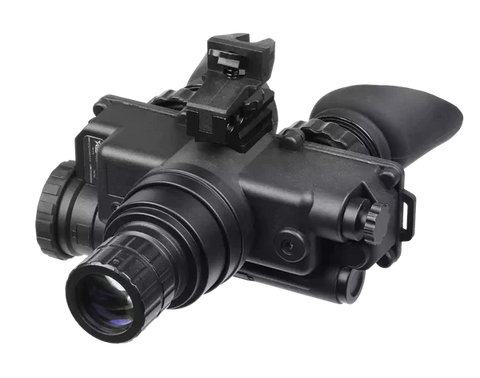The odds are that you have viewed images or videos taken using night vision and thermal vision at some point in your life. In fact, you may even recall distinct visual differences between the images that each of these visions produces. However, have you ever stopped to consider the true underlying differences between night vision and thermal vision?
As it turns out, although they seem to serve the same purpose, night vision, and thermal vision are entirely different in how they operate and when they are useful. To help you understand these two competing technologies, we've detailed night vision vs. thermal vision in the article below.
Night Vision
We'll begin by describing night vision, as it is the technology that you are likely more familiar with already. Most of us recognize night vision as being responsible for the dark, green-tinted night time footage of military, police, and security operations. But few of us truly know how night vision works.
In the simplest terms, night vision is nothing more than an incredibly powerful camera. All cameras operate by detecting light to create images. The issue is that when there isn't much light available, such as during the dead of night, most cameras become incredibly ineffective.
Night vision solves that issue by capturing even the smallest amounts of light to develop photos and videos in dark settings. In other words, even if there is very little light available, a night vision camera can amplify whatever small amount of light is there to create a visible image.
The key here is that there has to be at least some amount of light around for night vision to work. For instance, if you attempt to use night vision where there is essentially no light available at all, it won't be effective. However, as long as there is at least some ambient light, such as moonlight or distant streetlights, night vision is an incredibly functional technology.
Due to the inherent value of being able to better see at night or in otherwise dark situations, night vision has broad applicability across many industries. Likewise, there are many different night vision devices, including cameras and goggles.
What is Thermal Vision?
Although on the surface, it seems that night vision and thermal vision technologies are quite similar, that is not the case. In the previous section we noted that night vision essentially works like an exceptionally strong camera that can intensify even incredibly small reflections of light. By contrast, thermal vision does not operate like a camera at all.
Rather than intaking light like a camera, thermal vision devices use sensors to detect heat. In fact the name thermal vision implies this underlying function as the sensors in thermal vision pick up on thermal energy.
Nearly every object has something called a heat signature, also known as an infrared signature. In laymans terms, this means that people, animals, and objects radiate energy. The hotter those people, animals, and objects are, the stronger their radiation energy is. The sensors in thermal vision technologies pick up on heat signatures to create clear images.
The immense benefit of thermal vision over night vision is that since thermal vision relies on heat rather than light, you can use it in settings that are completely dark. On the other hand, it is only possible to use night vision if there is at least some amount of light available.
When to Use Night Vision vs. Thermal Vision
Now that you understand what night vision and thermal vision are on a basic level, the next step is to know about the situations in which it is better to use one of these technologies or the other. The differences in underlying functionality that we described above make for distinct differences in when it is preferable to rely on night vs. thermal vision.
For instance, let's imagine a scenario in which you are attempting to capture a picture or video on a foggy night. In that situation, using thermal vision would be far more advantageous. The presence of fog reduces the amount of available light to the point where night vision may be difficult to use entirely.
Similarly, let's consider a case in which you are attempting to view through foliage or some other thin material. Again, thermal imaging would work better than night vision because thin materials like leaves can often block reflected light while still allowing thermal energy to more through. This fact makes thermal imaging especially beneficial when you are attempting to track animals at night as they will give off clear heat signatures, even through plant material.
But while there are plenty of ways in which thermal vision seems to be the better choice than night vision, there remain times in which night vision is the preferred technology. The best example of this is on a cold night. When temperatures are low, the objects you're attempting to view will be colder as well, which leads to heat signatures that are less intense and more difficult to read.
Lastly, if keeping costs low is a priority for you, then night vision is usually the best option for you. While most thermal visions devices are relatively expensive, you can find highly effective night vision devices for just a few hundred dollars.
Conclusion
The main distinction to remember is that night vision depends on having at least small amounts of light available to function. As long as there is at least some light, night vision will be effective. Thermal vision depends on heat to create images, which means it is functional even when there is no light at all.
Now that you understand that key difference between night vision and thermal vision, all that's left to do is decide which is right for you. Once you do, you can begin your search for the best night for thermal vision devices at Optics Force.

